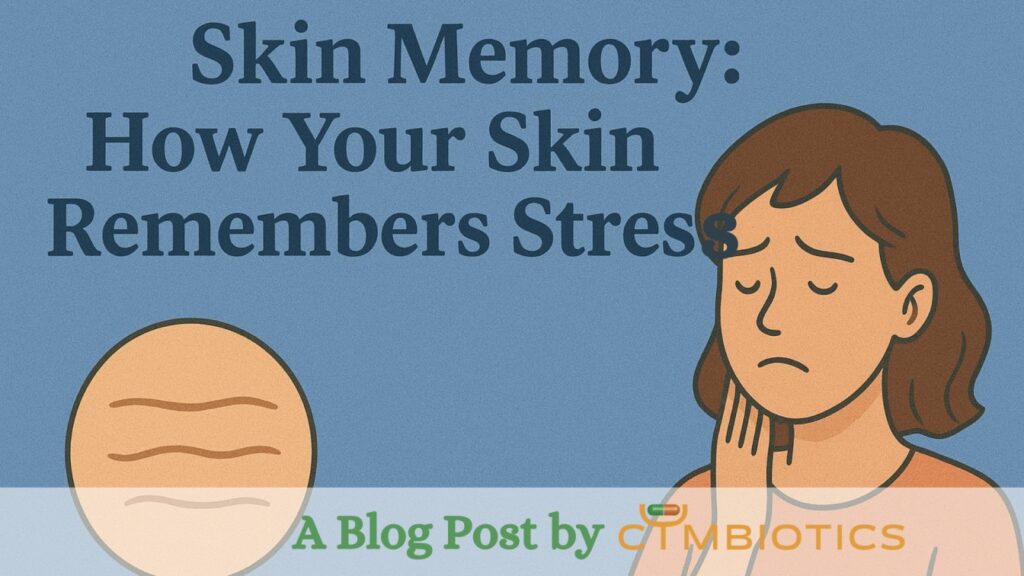The skin is more than a barrier, it is an intelligent, adaptive organ that records experiences. Just like the brain and immune system, skin has a kind of “memory.” Past encounters with environmental stressors such as pollution, UV radiation, or inflammation shape how it reacts to future challenges. This phenomenon, often called skin memory, has profound implications for skin health, dermatology, and topical innovation.
What Is Skin Memory?
Skin memory refers to the way skin cells and immune pathways adapt after stress or injury. Research shows that keratinocytes and epithelial stem cells can “remember” previous insults. For instance, when the skin is inflamed, stem cells within the epidermis retain epigenetic marks that prepare them for faster responses upon re-exposure. This is a survival mechanism, it allows the skin to respond more efficiently to repeated threats.
But while adaptive in the short term, this heightened reactivity can also make the skin more prone to chronic inflammation, hyperpigmentation, or premature aging if environmental stress is constant.
Cellular and Immune Pathways of Skin Memory
Keratinocytes, the primary cells of the epidermis, are no longer viewed as passive structural components. They actively participate in immune surveillance by releasing cytokines, antimicrobial peptides, and growth factors. Studies show that keratinocytes regulate both innate and adaptive immune responses, acting as “gatekeepers” of the skin’s defense.
Epidermal stem cells also play a central role. When exposed to stress, they undergo epigenetic modifications that prime them for future responses. This means that long after the initial injury or inflammatory event, the skin is still “trained” to react. Such adaptations are a double-edged sword, they enable resilience but also raise the risk of exaggerated responses.
Environmental Stress and Long-Term Effects
Pollution and UV radiation are key environmental drivers of skin memory. Exposure to airborne pollutants leads to oxidative stress and mitochondrial dysfunction in skin cells, setting off inflammatory cascades that leave behind molecular imprints. Similarly, UV light not only damages DNA directly but also trains keratinocytes and immune cells to be hyper-responsive.
Over time, these effects accumulate. Skin may become more sensitive, uneven in tone, and prone to barrier dysfunction. This is why individuals who live in polluted urban environments or spend years in the sun without protection often see visible signs of accelerated aging and chronic skin concerns.
Why Skin Memory Matters for Dermatology
The concept of skin memory shifts how we think about skin care and dermatological interventions. Instead of focusing only on treating symptoms, like dryness, irritation, or pigmentation, researchers must also consider how the skin’s “history” influences present behavior.
For example, a patient who has experienced repeated inflammatory flare-ups may need formulations that not only calm the current irritation but also help retrain skin pathways toward a balanced state. Similarly, topical interventions for photoaging should not only repair DNA damage but also reduce the “memory load” from cumulative UV exposure.
Rethinking Topical Innovation
At Cymbiotics, research into barrier biology, immune pathways, and dermal delivery systems is guided by this deeper understanding of skin intelligence. The goal is to design topical systems that respect the skin’s ability to remember while minimizing the harmful imprints left behind by environmental stress.
This involves:
- Barrier-Supportive Formulations: Restoring hydration and lipid balance so that skin has the structural strength to resist future insults.
- Smart Delivery Systems: Ensuring active agents reach the right layers without overwhelming the skin’s natural rhythms.
- Inflammation-Modulating Approaches: Reducing unnecessary immune activation, preventing the cycle of chronic reactivity.
By leveraging technologies like lipid-based nanoparticles, penetration enhancers, Cymbiotics aims to create interventions that help the skin recover, adapt, and maintain resilience over time.
The Takeaway
Skin memory is both protective and problematic. It enables rapid responses to threats but can also predispose skin to chronic inflammation and aging. By studying this phenomenon, dermatology is moving toward more personalized, adaptive treatments.
Cymbiotics remains committed to translating this science into next-generation topical systems, ones that do not just provide short-term relief but actively work with the skin’s memory to build lasting resilience.
References
- “Inflammatory Memory Sensitizes Skin Epithelial Stem Cells to Tissue Damage” – Naik S et al., Nature, 2017.
- “The Immune Functions of Keratinocytes in Skin Wound Healing” – Piipponen M et al., Frontiers in Immunology, 2020.
- “Skin Homeostasis as a Neuro–Endocrine–Immune Organ” – Jin R et al., Life (Basel), 2022.
- “Critical Role of Keratinocytes in Cutaneous Immune Responses” – Gupta RK, Exploration Immunology, 2024.


